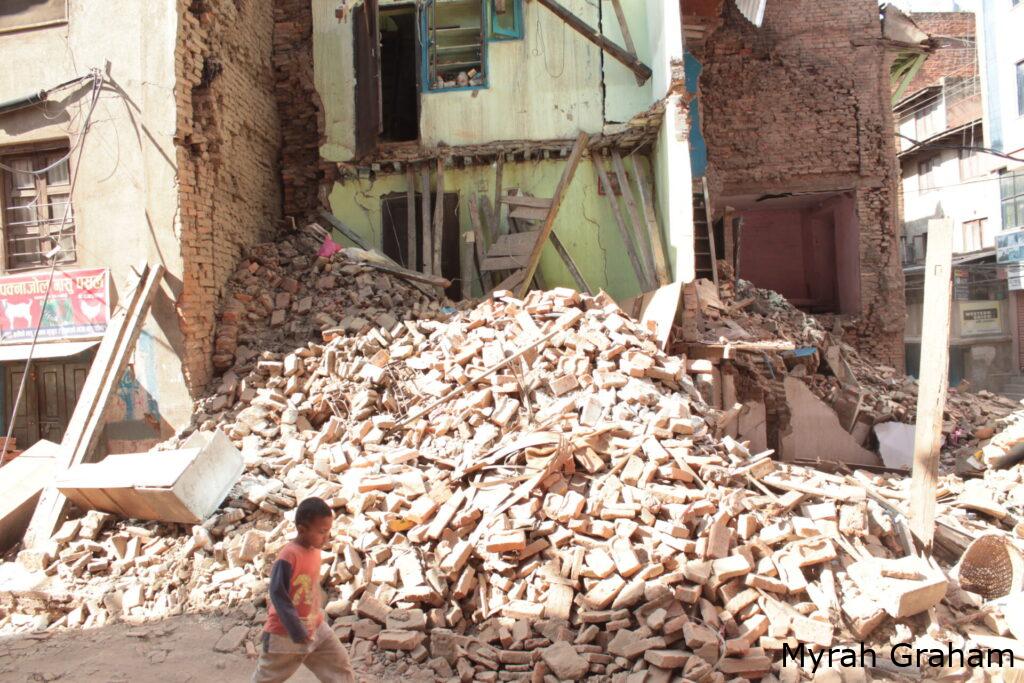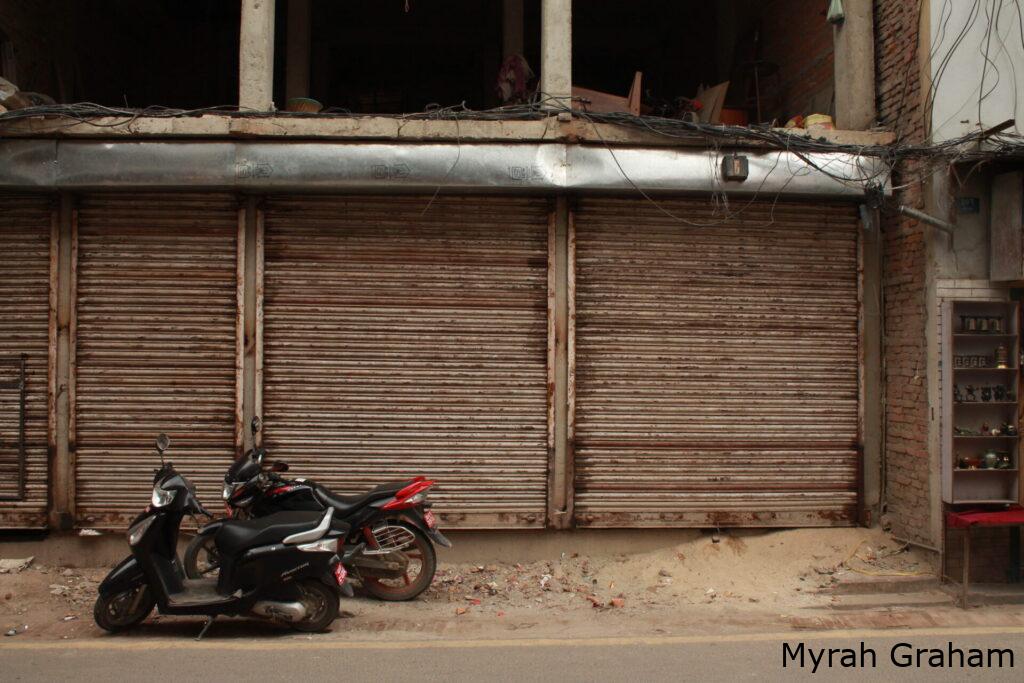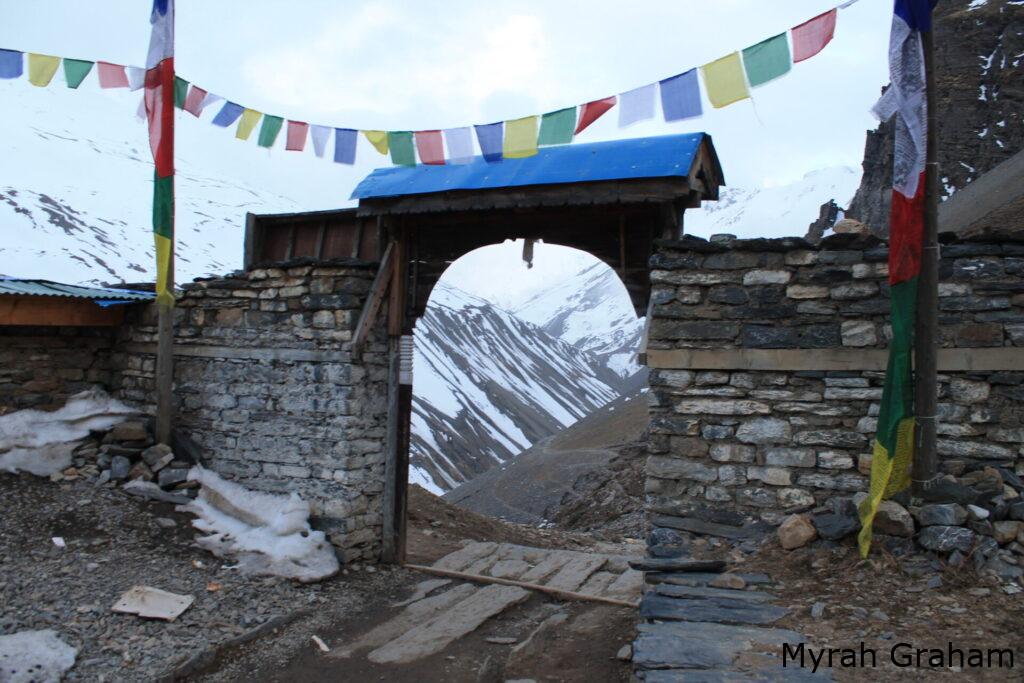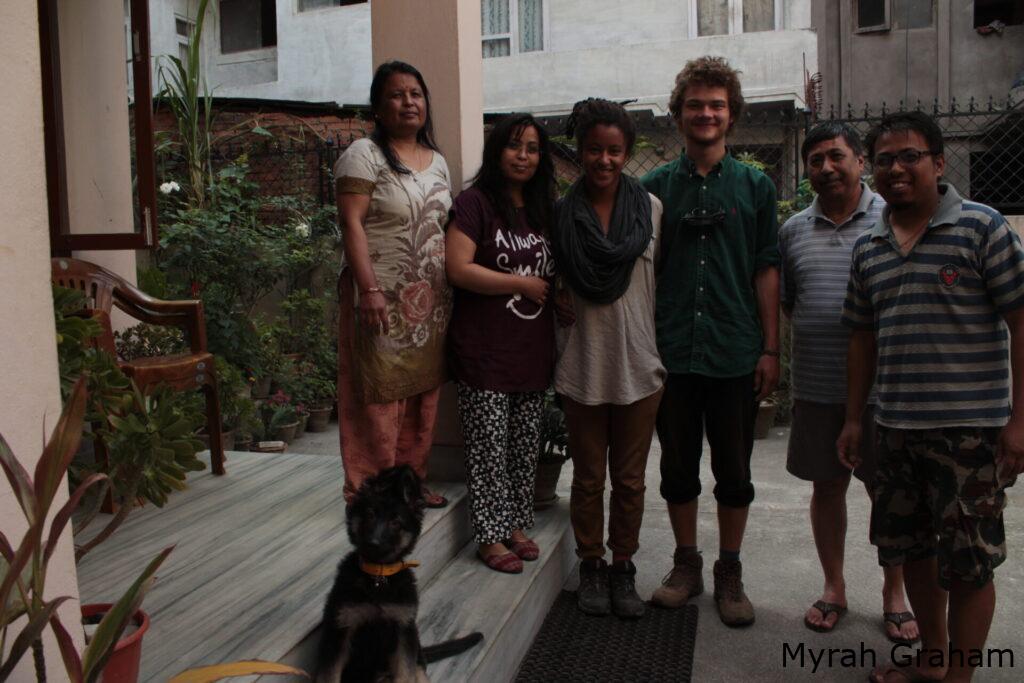Nepal’s younger generation takes charge during the 2015 earthquake crisis
There’s no feeling as disorienting as having the ground under your feet bend and ripple. The reality of how vulnerable we are in natural disasters became seriously real to those present during the many earthquakes that hit Nepal this spring. With government response severely lacking, the grounding force of action is found in the active aid of young Nepali volunteers.

On April 25th I was in the Annapurna mountain range trekking with six other young and fit people. The sudden avalanches and rockslides around us let us know something serious was going down. By some miracle, we all made it to the next village safely. Having no connection to the outside world, the seven-day trek back to civilization was tense. One week later we were back in Pokhara, a relatively unaffected city west of Kathmandu. The wave of information that hit us about the magnitude 7.8 quake was as overwhelming as the event itself. 39/75 districts damaged by the earthquake, 8 million affected, 2.8 million displaced and a mounting number of deceased. Yet all seven of us were completely fine. The inner call to action had us on a bus to Kathmandu the next day. Here the post apocalyptic visions greeted us generously: toppled buildings, mountains of rubble and many tired-looking families crouching under tarps. Nevertheless, we followed the rumours that a collective of local volunteers was growing in the Sanepa neighbourhood. Next stop: Base Camp.
This hip café/bar is a hub where many Nepali community groups now meet up to coordinate relief efforts.The Base Camp collective operates under the banner of a pre-existing charity called Children and Youth First, founded by Haushala Zimba. At any given time you can find a dozen young people making calls, compiling data and working on crowd funding sites. These young professionals and students tirelessly organize missions for the long-term and immediate relief needs of underprivileged villages. The reality is most foreign aid is given to people in the capital or surrounding towns; the other villages are just too far or not known well enough. Locals are working hard to spread the relief to destitute areas.
Upon entering the volunteer hive we were greeted by Nayan, a crowd-funding guru who is working to save his friend’s village, Kalinjor. The first conversation we had was about how we were dealing with the aftermath. “I’m definitely traumatized”, says Nayan. “I’m focusing all my energy on one place to be sure of having the greatest positive impact”. Daily aftershocks still continue, and Nayan refuses to go past the first floor of any building. Many people still sleep outside, and the frequent shaking always stirs conversation back to the earthquakes. “I wonder when we will have peace again”, says Utsav, one of the Base Camp volunteers still in high school.

This is the second week since the big shakedown, and many small organizations are sprouting all over Kathmandu. Guesthouses, bars and youth centres are transforming into relief work headquarters. Although these groups all have different goals, some procedures are universal. The first step in helping a village is the assessment, which is basically sending a representative to see how bad things are. Once a village is reached, details of the destruction are updated on Quakemap, an app that helps in the mapping of affected areas so the various groups can coordinate were to bring help. When it is known how much food, sanitation, medicine and shelter materials are needed, a mission is planned and a team is dispatched. The logistics of transport and acquiring materials is pieced together through social media and contacts from all over the world. Tarps from Singapore, water bottles from India and plenty of other materials from local companies selling the essentials at cost price.
After one week in stressful Kathmandu, I was eager to join on the missions. On May 11th I joined a team of 15 volunteers going to Badegan, Ward 3 of Sindhupalchok district. With money raised online, we were able to rent three pickup trucks and load them with enough supplies for the villagers and two nights of camping for the volunteers. This village still hadn’t received any aid, and the three hour drive on winding roads made it clear why: anyone we asked for directions would declare we had arrived… In order to profit from the relief materials. Our Nepali friends were not fooled, and we bypassed these imposter villages to finally reach our destination. The villagers were tense and became agitated when we told them we’d hand out supplies in an orderly way the next day. “If we gave the supplies to the village leaders right away, those of higher caste would be getting most of the stuff” justifies Amanda, one of the owners of Base Camp and a Nepali social relations worker. Nepal has a strong caste system which sees many underprivileged groups being left out of the aid efforts. Amanda goes on to explain that “people are people and we pay no attention to the caste system. We believe in giving help based on the urgency of necessity”.
The aid of international organizations is usually well-intentioned, but the consequences of a culture strongly influenced by social standing is often unknown. The advantage of the help from these young Nepalese groups is obvious; cultural awareness brings more efficient and egalitarian aid.

The next day supplies were distributed based on need, and toilets were dug with instructions on sanitation to the villagers. A few hours later, tragedy hit once again. May 12th saw a magnitude 7.4 earthquake which levelled the remainder of the houses in Sindhupalchok. Massive aftershocks continued into the next day, when a retreat was made by our team by trekking two hours to a safe road back to Kathmandu.
Despite impending danger, more missions are dispatched daily to these remote locations to bring help. Helicopters have even been rented by these youth groups, (at roughly $1000/hr CAD), to reach certain off-grid villages where evacuation and desperate need of supplies had been pleaded for.
After the second massive quake, efforts have doubled and fatigue has quadrupled. Nevertheless, more relief-related work is being organized in the city. Workshops by Initiative Outdoor are teaching young volunteers basic first aid and disaster relief response tactics. Pre-existing nepali organizations such as Vol Nepal, Local Women’s Handicrafts and We for Change are utilizing the foreign volunteers that are being turned down by the big organizations for “safety reasons”. The founders go to the village themselves for safety checks, then initiate the sorting of bricks and temporary shelter building as some of the daily activities. Newly created groups such as Secret Garden Disaster Relief and Yellow House collective are also coordinating efforts and dispatching teams on relief missions. Both are guesthouse-turned-relief hub in the aftermath of the earthquakes. “It’s the first time I see so many young people being active in Nepal” says Utsav. These young adults,(myself included), admit to not having experience with relief work, but trying is the only thing that seems to make sense in these times.
Most volunteers criticize the government, who seems to not be responding to the people’s pleas for help. Much of the foreign relief supplies initially flown in are still left stranded in customs for inspection. Three weeks after the fact, relief supplies are still on the airport runway. “The only way Nepal will heal is with the continued efforts of the people” says Sarjaal, recent medical school graduate and Base Camp Volunteer. Even amongst the constant rumbling from the quakes and structured demolition of unsafe buildings, attitudes remain hopeful in the typical Nepali way. Sarjaal speaks for many when he voices his optimistic view that “now is the time to rebuild [Nepal] in a new way”. With such a responsive team of youth groups, Nepal will surely regain its footing once the rumbling ends.
